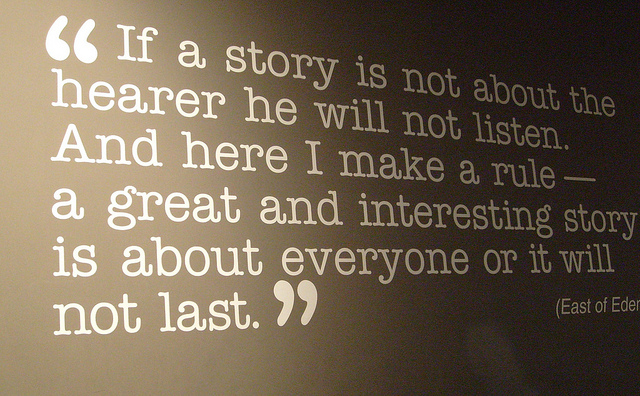
How can visual media bring healthcare social media to life?
This edition of the Healthcare Social Media (HCSM) Review explores visual storytelling. Storytelling alone could have been our sole focus, but the increasing prominence of visual media, especially across social networking sites, couldn’t go unnoticed. Posts span visual communication research, content strategy, and storytelling techniques.
- Tracy Granzyk calls attention to a recently published study that demonstrates how visual storytelling supports patients facing dementia.
- A new article published in IEEE’s Transactions on Visualization and Computer Graphics, The Five Ws for Information Visualization with Application to Healthcare Informatics, offers
a framework for improving the usability of visual information.
- CommunicateHealth looks at which is better for visual communication: a photo or an illustration. They suggest using an illustration to convey an abstract idea or process and a photo to evoke emotion. CH also shares the resource, The Noun Project, which offers a free collection of icons, symbols and simple graphics.
- Christine Russel and Rebecca Stern recently co-hosted the Health Care Leadership (#HCLDR) Twitter chat with a focus on visual media. Participants shared how visual media can “put a face” to narratives, issues and diseases, provide patient education and support patients
in making informed decisions. Many participants mentioned how visual media can help expand access to health messaging.
- Ragan Healthcare outlines six ways hospitals can shape their brand through the use of visual storytelling.
- Ash Rishi, CEO of a U.K.-based digital marketing agency, argues that storytelling can help increase patient engagement. His suggestions? Reveal something personal, take patients on a transformational journey from beginning to end and tap into emotion.
- The Content Marketing Associations shares 7 Steps to Telling the Perfect Story in the form of an infographic. You may also recall when former-Pixar storyboard artist tweeted Pixar’s 22 Rules of Storytelling. Both are helpful nuggets of information.
- As we know, terminology matters. In looking to harness visual media, perusing the field of digital storytelling is another avenue for inspiration. You may also be interested in joining the Transmedia for Good Facebook group, spearheaded by the talented Nedra Weinreich.
Inspirational Models
I keep a Pinterest board of inspirational models to help spark new and evolved applications of using social media for good. Recent examples of visual storytelling in healthcare social media include:
- Positively Aware Magazine’s #ADayWithHIV Campaign
- The Waiting Room’s Multi-Channel, Storytelling Project
- DefeatDD’s Toilet Calendar Contest (as a follow-up to their Poo-Haiku Challenge)
- National MS Society’s User-Generated Stories
Visual media is just one tool in the storytelling toolbelt. From Google Helpouts for healthcare, to robot doctors and dreaming of 3-D language development, the possibility in the types of potential tools continues to expand.
What are your favorite examples of visual storytelling through social media?
]]>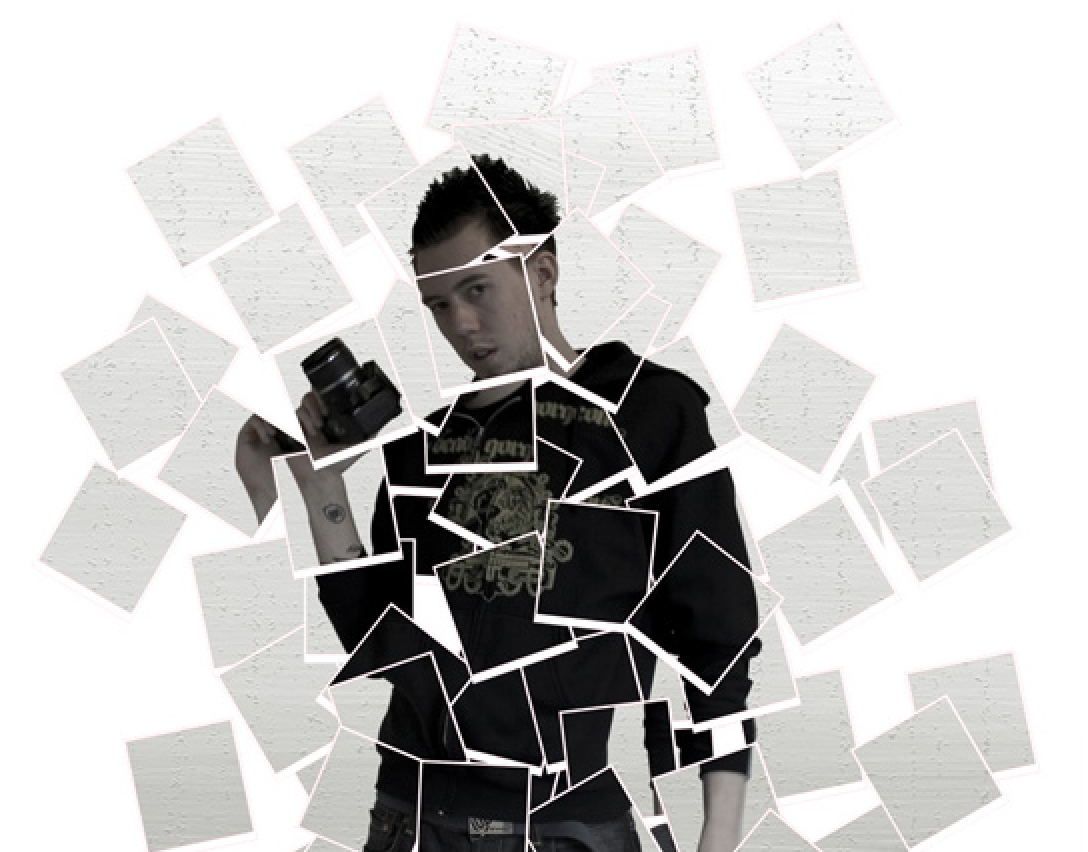
How can we harness the power of visual storytelling in healthcare social media?
65% of the American population are visual learners. You may want to read that a second time. And should we be surprised? Photos and videos (visual, multimedia content) serve as social currencies online as evidenced by the infographic explosion combined with social network sites bringing this content to bear: Instagram, Tumblr, and Pinterest to name a few. Even Twitter recently updated to offer more visual tweets.
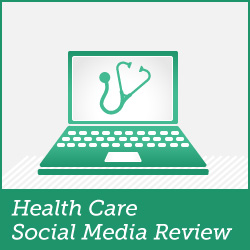 On Wednesday, Nov. 20, SocialButterfly will again host the Health Care Social Media Review, the peer reviewed blog carnival focused on health care social media, curating the latest research and resources shared by our fellow colleagues. You’re invited to add your voice to the dialogue.
On Wednesday, Nov. 20, SocialButterfly will again host the Health Care Social Media Review, the peer reviewed blog carnival focused on health care social media, curating the latest research and resources shared by our fellow colleagues. You’re invited to add your voice to the dialogue.
The theme for issue #41 is visual storytelling:
- Discuss recent visual communication research (or needed research) in this area
- Highlight helpful tips and tricks for integrating visual media into your content strategy
- Identify inspirational models of people, organizations and campaigns who you think are effectively storytelling through visual media
- Share storytelling techniques and strategies that may be applicable to health care social media
How to Submit:
Email a link to your post or posts (no more than two submissions per author) by 12pm (ET) on November 19.
Format your submission email as follows:
- Email Subject Line: Health Care SocialMedia Review
- Blog Title
- Blog URL
- Post Headline
- Permanent link to post
- Your Name: Name, Username, Nickname, or Pseudonym
- Description or brief excerpt
Learn more about the HCSM Review by visiting HealthWorks Collective or follow @healthworkscollectiv on Twitter. We look forward to your posts!

Where do you turn for the latest research on the impact and influence of social media?
This edition of the Health Care Social Media Review (HCSM) provides the latest research your fellow colleagues are studying by highlighting social media research and related resources. Whether you’re talking with your stakeholders, board, manager, customer, or colleague, being well-versed in the research equips you with the evidence and theory needed to optimize your impact.
I have yet to attend a social media workshop or presentation where someone doesn’t ask about resources relatesd to social media research. (And thank goodness, right? We need to stay curious.) A number of people want research to help them understand the pros and cons of social media and translate how that knowledge applies to their mission. Here’s what our peers had to share this week:
Rich Resources
- Pew Internet & American Life Project: This is the main go-to for many, given Pew’s look into at the impact and use of technology across demographics. Did you see their June 5 report sharing that 56% of Americans own a smartphone? Their May 21, 2013 report may also be applicable to you as it focused on teens, social media and how they view privacy.
- DigiHealth Pulse: Enskeptos is newer to the scene but offers insights from their ongoing tracking study of digital health consumers. The study looks at 39 health topics and 11 different health behaviors to help us better understand how active digital health consumers consume, perceive and react to online health information.
- Journal of New Communications Research: The Society for New Communications Research (SNCR) is always a must-watch as they support and fund research. Both Fard Johmar (of Enskeptos) and Craig Lefebvre have participated in SNCR, helping bring health care social media research to bear.
- CDC’s Health Communication Digest: Looking for the latest peer-reviewed literature? CDC offers up its Health Communication Digest, highlighting a findings of note, many of which relate to health care social media.
- PWC, Comscore, eMarketer and Nielsen A number of organizations offer up research and studies that can help further guide our work. For example, many of you may recall PWC’s report, “Social Media ‘Likes’ Health Care”.
- #SMMStandards: If you haven’t bookmarked this group, you’ll want to as the group is working across industries to develop standards in social media measurement .
Laying the Groundwork
This topic for this edition was inspired by some of my own social media research activities. Craig Lefebvre and I recently published a review of the research and evidence for the use of social networking sites (SNS) to improve cardiovascular health in the April 30, 2013 edition of Circulation, a journal of the American Heart Association. The paper, titled Digital Social Networks and Health, also offers guidance on the potential of creating social health experiences while also proposing a research agenda for better understanding the use of social media in health.
Not shortly thereafter, Damon Centola of MIT published a follow-up article, titled “Social Media and the Science of Health Behavior“, also in Circulation. Centola’s article is a great read for those looking to understand and explore new research areas thanks to the opportunities social media affords. He also shares a case study from the Healthy Lifestyles Network that helps drive home the potential of what can be when you combine the power of social networks with social media–a key theme we share.
Diving In
Here are some additional research nuggets submitted to the review:
- The Cancer Conversation Grows and Narrows: Greg Matthews shares insights from The MDigitaLife Social Oncology Project 2013, which tracked more than 16 million cancer-related conversations. He shares: “…increasingly, there isn’t just one cancer conversation – there are distinct and recognizable conversations happening now about dozens of different cancer varieties – each with its own participants, preferred channels, media coverage and physician influencers.” Having done some research into the HIV conversation online, I can share that this statement also applies to the evolved HIV discussion online and makes me wonder what other health topics and diseases are becoming more sophisticated and what that means for our work.
- Here’s a Conundrum: Hispanics are some of the greatest users of mobile and social media technologies. And despite all our work in health care social media, over half of Latinos don’t know key aspects of the new health care law. This is our fail. At the same time, it’s a great opportunity for change. Any takers?
- Twitter and Vaccine Information = A Good Mix: According to a new study, Twitter was found to be a popular and reliable source for vaccine information. Of note, researchers found that over the more than 2k tweets analyzed, 54% conveyed a neutral position on vaccinations.
- Is Social Media Helping or Hurting? Researchers in Canada are looking into the impact of social networks and social networking sites on mental health, putting a large focus on Facebook. I’ve written before on conflicting findings regarding Facebook’s impact on our health, so I can’t wait until the findings of this study are released.
- People Want Online Video, but Aren’t Sure How to Get It or Measure Its Impact: Given increasing interest in online video and YouTube’s latest design update, you may be interested in the latest report, “Into Focus: Benchmarks for Nonprofit Video and a Guide for Creators“. This is the first report of its kind and was compiled by See3 and Edelman in collaboration with YouTube’s Nonprofit Assistance Program.
- Text4Baby Works, Still: A new report came out finding that the Text4Baby program is beneficial to women and moms. This may also be one reason why the program has expanded its offerings into video. In reviewing digital health solutions, email and/or text reminders over and over are found to be effective in individual pilots and projects. Hopefully, this added research will support similar types of efforts. Email may not be as “sexy” as social media, but it is effective.
Coming Soon
While the body of research grows, some organizations are joining the effort. One such organization is the Human Factors group which is hosting a social meida research competition with a $10,000 prize purse. What about you – do you have any social media research activities planned for 2013?
Thank you again for your contributions to this edition. Health Care Social Media Review has information about the next edition’s host and instructions on how to submit your posts for review in future editions.
]]>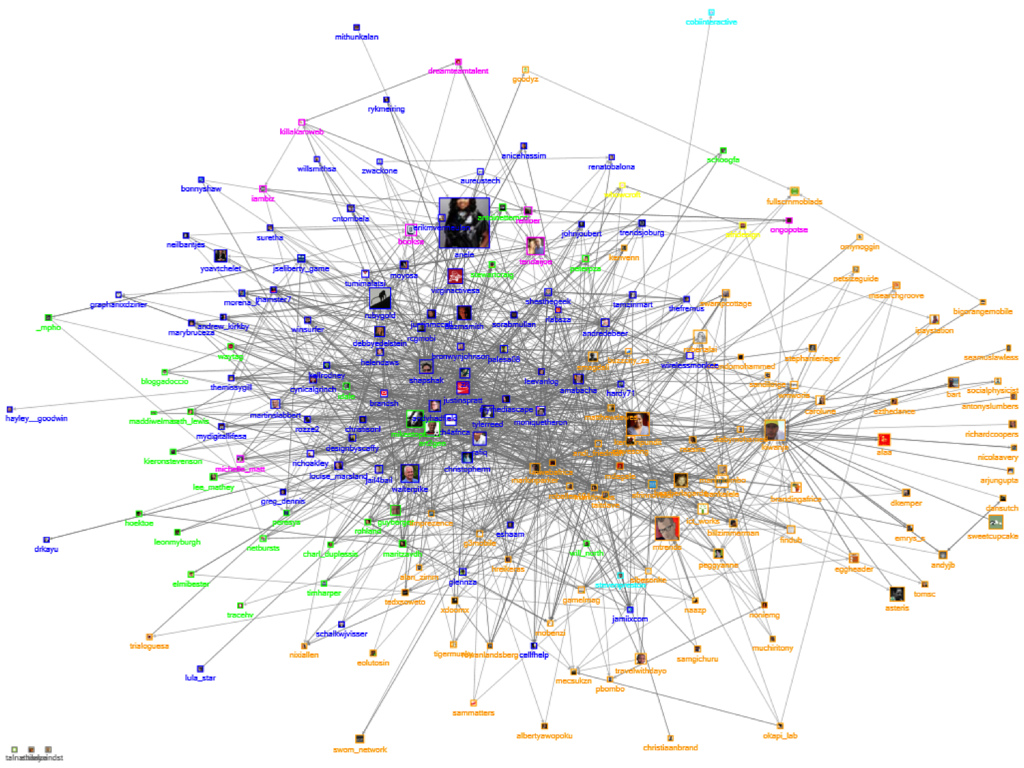
What’s the latest social media research you’re reading?
Weekly, Daily, a new social media research report or study is released, competing for our attention and analysis. What are some of the latest research nuggets you’ve found most useful? And what are some of the information sources that help you stay up-to-date as the research works to catch up with practice?
On Wednesday, June 5, SocialButterfly will again host the Health Care Social Media Review, the peer reviewed blog carnival focused on health care social media, curating some of the latest research and resources shared by our fellow colleagues.
Email a link to your post or posts (no more than two submissions per author) by 5pm (ET) on June 3.
Format your submission email as follows:
- Email Subject Line: HealthCare SocialMedia Review
- Blog Title:
- Blog URL:
- Post Headline:
- Permanent link to post:
- Your Name: Name, Username, Nickname, or Pseudonym
- Description or brief excerpt:
Learn more about the HCSM Review by visiting HealthWorks Collective or follow @healthworkscollectiv on Twitter. We look forward to your posts!
]]>
How are you rocking social media in just 30 minutes a day? What’s your best tip?
One of my favorite people, Beth Kanter, asked her Facebook community this very question after coming across the latest infographic offering advice on the topic (link to full infographic). Given the expanding waistline of digital content, conversations and online communities, it’s a question experts continue to assess and re-assess, adjusting their daily/weekly routines to “keep up”. You may have noticed I’m a bit “quieter” these days. This is because, in the past year, one of the greatest items I’ve learned mirrors the advice I offered in response to Beth’s question.
To me, the infographic is exhausting. It’s almost like a snake oil salesman trying to push onto you their “easy-button” answer. Reality: There is no easy button. Here’s what I shared:
“That infographic is exhausting. I say relationships are key as is producing quality work, knowing why you’re doing it and the impact it’s having – and being able to share that with others in a meaningful context they can apply to their own work. That will go much farther than blind social sharing of content. Success is more than 30 minutes a day. It’s a lifelong journey achieved daily when defined right.”
Some others chimed in that automation is a big help, citing tools like IFFT that have relieved their daily consumption-desires of content. Automation though is a dangerous line to cross–so I wouldn’t recommend doing it lightly. IMO. If we have to talk “tools”, I would say not to focus on the tools. And instead, concentrate first on having a healthy information diet, further developing your skills to critically assess information and transform it into knowledge you can apply and share with others.
What advice would you offer?
]]>

How social is your state’s health department?
Newly announced, the “Social Media for Public Health” Twitter chat will be hosted the second Tuesday of every month at 1pm, EST. The host account, @phsocmed, already has over 50 followers and participants are invited to use the hashtag #SM4PH to chime in. But just how social are our health departments anyway? Research shows we still have a ways to go.
A One-Way Conversation
A March 2012 study found that 60% of state health departments (SHD) used as least one social media platform. The study itself looked to provide an initial baseline on SHD social media adoption and usage to increase its effectiveness in the long run.
Results found that of state health departments using social media:
- 86.7% has a Twitter account
- 56% a Facebook account
- 43% a YouTube account
Perhaps not surprising to many of us in public health, results also showed that most social media was used for disseminate information with “very little” interaction with fans and followers. On average, one post a day was the average with (depressingly), over a quarter of Facebook posts being auto-feeds originally posted to a third party, resulting in 86% of the Facebook posts assessed receiving no comments and 45% had no likes.
Benchmark = Starting Point
Previous to this study, no baseline measure of social media adoption and usage was available for state health departments to benchmark their progress. According to the study’s research, “social media use by public health agencies is in the early adoption stage”. SHD are using social media as a channel to distribute information rather than creating conversations and building connections.
If interested in social media benchmarks, the Social Media for Global Health Work Group recently published its results for benchmarking social media use among projects and organizations working in global health and development. NTEN also offers a Social Networking Benchmarks Report that looks at nonprofits specifically.
Baby Steps
We have social health states, but they have yet to fully put the social into their social media use. Perhaps learning opportunities like the new “Social Media for Public Health” Twitter chat can help bridge the gap.
What’s the biggest opportunity you see for state health departments using social media?
photo credit: Luke Redmond via photopin cc
]]>
This edition of the Health Care Social Media (HCSM) Review explores recent discussions and research on how social media collides with health promotion, prevention and wellness efforts. While a number of submissions highlighted social media, many spoke more to digital health as a whole vs. social media specifically, an important differentiation. So, let’s explore that first.
Digital Health Takes Center Stage
In health care social media discussions, lines quickly blur as people share and develop ideas that relate to possible close cousins of social media including big data, wearable tech or mobile technology. Refer to this article by Healthy Startups on the 100 Trends That Will Change Healthcare in 2013 for a full list of potential relatives.
Or, people start considering “social media” implementation and evaluation strategies when they actually want to look more broadly at a program’s full digital strategy and communication activities. Now, we have Forbes declaring 2013: The Year of Digital Health and our Ogilvy colleagues chiming in on the discussion.
With the close of the Digital Health Summit at the Consumer Electronics Show in Vegas earlier this month and next month’s Digital Health Extravanganza, the conversation isn’t slowing down anytime soon. The fast-growing 14,000+ member Digital Health LinkedIn group provides further evidence.
(…but What Is It?)
Social media and all its relatives – is that digital health? Yes. Some groups have put together more scholarly definitions:
- Digitome: Digital Health is the use of technologies and networks by all stakeholders (doctors, patients, scientists, payers and providers) to enhance collaboration and personalisation, and to reduce the cost of healthcare. Digital Health is an umbrella term which incorporates overlapping technologies and approaches including Health 2.0, Connected Health, eHealth, telehealth and mHealth.
- Rock Health SXSW #DigiHealth Panel, (2012): Digital health is an emerging industry at the intersection of technology and health, radically changing how we access and use personal health information. It unites smartphones/tablets (new means of 24/7 access to information), with big data in the cloud (enabling personalization), game dynamics / mechanics (new engagement mechanisms), the increased engagement of physicians online (interactive doctors), and a vibrant social conversation about health. The panel, composed of pioneers in this new space (WIRED Magazine, HealthTap, Rock Health, Massive Health, CakeHealth, others), will explore why Digital Health is happening now, and how it is poised to forever transform how we access and use personal health information, how we manage our personal health, and how we interact with physicians using online/mobile applications.
- World Economic Forum: Digital health harnesses the transformational power of modern information and communication technologies for improving health and healthcare throughout the world. Information is the lifeblood of health and healthcare. In caring for individual patients, managing healthcare systems, controlling and preventing NCDs or other epidemic illness, or conducting cutting-edge clinical research, we are only as good as the information we have about the health and healthcare of individuals and populations. Digital health releases the power of health-related data by applying the most advanced information and communication technologies to the collection, sharing and use of information that can improve health and healthcare.
While discussions are still underway, here’s the take away: Digital health encompasses social media – but it’s so much more! For your behavior change interventions, social media programs and communication efforts, focusing solely on social media limits your impact. Introduce yourself to digital health.
Hot Topics
So, back to our submissions – here are the stand outs, though some feature social media’s cousins and close relatives:
- Given the latest buzz on gun control and violence, many may find this recently published fact sheet on how to use social media for crime prevention from the International of Chiefs of Police interesting. The U.S. Institute of Peace also shared a variety of initiatives on how social media is being used for conflict prevention abroad.
- The American Heart Association released a scientific statement saying that social media may help fight childhood obesity.
- Amelia Burke reminds us of the allure of social media and its relevancy to health in her post Social Media: The Oryx of the New Communication Era. While she didn’t officially submit it, Burke also shares how social media can liven up flu messages. Given the current state of the flu in the United States, you may also be interested in Michael Sherman’s post highlighting how “Social Media Now Tracks Flu Faster than the CDC“.
- While not social media, Sherman also reminds us that email is alive and well in healthcare marketing. I couldn’t agree more. I recently shared a number of email health interventions that have seen success.
- You’ve heard of Text4Baby, but an Illinois Department of Health initiative called Text2Survive is using mobile messaging to enhance minority youth access to HIV/AIDS information and prevention. An HHS Text4Tots initiative is also in works focusing on nutrition and physical activity. Meanwhile, a separate Text4Tots program was piloted to promote oral health.
- This study looks at the potential of using Facebook and Facebook groups to promote safe driving.
- The number one source of health information for most people is still the doctor. Given this, Kate Berry’s post outlining the Patient Engagement Framework and its five phases is worth noting.
Thank you for all of your contributions to this edition. Health Care Social Media Review has information about the next edition’s host and instructions on how to submit your posts for review in future editions.
]]>
How can social media support prevention and wellness?
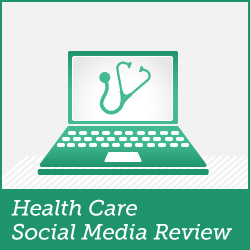 January is the month of new resolutions yet a study out of the University of Scranton finds that only 8% of us actually achieve these resolutions. At the same time, about 1 in 3 Americans plan on buying a new fitness tech in 2013. Yet as the image above reminds us, at varying degrees, health is more than a click of a button.
January is the month of new resolutions yet a study out of the University of Scranton finds that only 8% of us actually achieve these resolutions. At the same time, about 1 in 3 Americans plan on buying a new fitness tech in 2013. Yet as the image above reminds us, at varying degrees, health is more than a click of a button.
On Wednesday, Jan. 16, SocialButterfly will host the HealthCare Social Media Review, the peer reviewed blog carnival for everyone interested in health care social media. Given the importance of prevention amidst a nation with an expanding waistline, this edition will focus on how social media collides with health promotion, prevention and wellness.
You may know of a number of initiatives using social media for health promotion. Submit them. You may have supportive research. Share it. You may think it’s all a bunch of hooey. We want to hear your opinion.
To submit your post:
Email a link to your post or posts (no more than two submissions per author) by 5pm (ET) on Jan. 15.
Format your submission email as follows:
- Email Subject Line: HealthCare SocialMedia Review
- Blog Title:
- Blog URL:
- Post Headline:
- Permanent link to post:
- Your Name: Name, Username, Nickname, or Pseudonym
- Description or brief excerpt:
Learn more about the HCSM Review by visiting HealthWorks Collective or follow @healthworkscollectiv on Twitter. I look forward to your posts!
]]>
Can online, social networks really help people stop smoking?
This is what 100 experts came together to discuss in a 2-day workshop in Washington, D.C. The result was a proposed research agenda on online social networks and smoking cessation. The group proposes 34 questions they deem most pressing in four categories: advancing theory, understanding fundamental mechanisms, intervention approaches, and evaluation.
This was 2010.
There is A Need
We are on the edge of 2013. And while the Web is ubiquitous–making qualms between offline and online approaches somewhat void when we should be looking at the overall customer experience…We’re still working to better understand many of the questions proposed:
- How well do theoretical models of social influence translate between offline and online contexts?
- How does information spread through an online social network? Are there identifiable patterns of information spread that can be leveraged in intervention research?
- Can key participants in a network be identified and targeted to foster information diffusion or make it more efficient?
- What are the drivers of the viral spread of an application, concept, or innovation through online networks?
- What predicts engagement in an online social network?
All 34 questions themselves are invigorating. I encourage you to take them back to your team to fodder discussion and brainstorming. We need to be asking these questions. We need to test our ideas, explore what’s working and share it with our colleagues. But there’s a greater need.
You Can Help Solve It
As a practitioner, one item stood out among the research agenda. It’s worth filing in your back pocket and pulling out as evidence when you’re in one of those meetings:
“While there are ways in which offline and online behaviors overlap and can reciprocally inform models, mechanisms, implementation, and evaluation, there are also important differences that require critical thinking about online networks. There is a need to challenge and test the assumptions inherent in traditional models when developing, implementing, and evaluating online interventions.”
You are called to challenge traditional models–even tested ones. Rather, find inspirational models. Study them. Find what’s working. Lean on your training, work to better understand people and unwind the assumptions you bring to even the tiniest of tasks. If you’re a graphic designer for example, maybe you look into the psychology of color and how that impacts design and behavior. This is the art behind the science, so go grab your paintbrush.
What do you think about the proposed research agenda? What questions would you add?
]]>A new comScore report reminds us that audiences are not audiences and that content can be discovered as much as broadcasted. According to the report, Instagram tops Twitter in mobile engagement achieving an average of 7.3 million daily active users compared with Twitter’s 6.9 million. This means 7.3 million people access and use Instagram on any given day. What’s more, the study also found that the average Instagram user spends more time accessing the app, 257 minutes compared to 169.9 minutes spent on Twitter.
Sharing Experiences
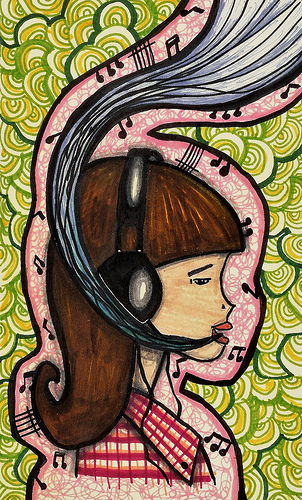
image courtesy of reavel
Does anyone else feel like Twitter has become a broadcast mechanism? I’m guilty of this myself. But Instagram, now that takes true imagineering. Just look at Sharpie for inspiration. Rather than trying to configure Instagram into a promotional tool, Sharpie uses it for storytelling with its images receiving an average of 1300 likes and over 21 comments.
For those unfamiliar, Instagram is a photo-sharing application that can be downloaded for iPhones, iPads, and Android devices. You know–that app Facebook bought for a billion dollars? You snap a photo and can apply a variety of filters to it to make it look weathered, faded, vintage, or enhanced. While you follow friends like you might on Twitter, the use of hashtags become all the more important as people tag photos as a main way to find content. Oh, and there’s a number of third-party apps to play with as well.
What makes Instagram unique is that is can capture moments, visually, from one person or from a crowds–while on the go. As Geoff Livingston shares, “People are sharing real experiences [on Instagram].” Another descriptor: “The revolution won’t be televised, it will be instagrammed.”
7 Unique Examples of Using Instagram for Good
With over 40% of the top brands on Instagram, I’ve rounded up some examples of using Instagram for good that go beyond Mashable’s list of 10 inspiring nonprofits using Instagram. If you know of others, please add them in the comments below!
- Bay Area Rapid Transit (BART) InstaWalk: East Bay Instgrammers, are one of three large Instagram groups in the Bay Area that organize photo-walks. This past January, their photo walk was amongst the BART system. If you want to address commuter health or promote walking, biking or taking the rail to work, this could be up your ally. Note: There are InstaWalks and then there’s InstaMarketing.
- Green NYC: The New York City Government is using Instagram in its Green NYC initiative by having their Mascot, Birdie, snap and share photos of his New York adventures. Green NYC looks to reduce greenhouse gas emission by encouraging New Yorkers to reduce their energy use, choose a more sustainable lifestyle, and take small actions that will help shrink the citywide carbon footprint and improve environmental quality.
- The #Kenya365 Instagram Project: A grassroots group of friends are starting a photo-a-day hashtag #Kenya365 to highlight life and community in Kenya. How can you expand perceptions of a geographic location or use the picture-a-day concept for your mission?
- Capturing moments: This may be taking things too far but Instagram was recently used to livestream a toddler’s open heart surgery. How can you provide access to big events or give view to the inbe-details of your work?
- U.S. Forestry Service’s Digital Leaf Press: Using Instagram, the service is taking conservation education digital! How else could you use Instagram for education?
- From Instagram to Inspired Media: This link actually shares five brillinatly creative uses of Instagram. While not necessarily social good specific examples, the creative concepts could be easily adaptable–an instagrammed music video? menu? mosaic art? Say no more.
- Advocating Through Visual Storytelling: Jana Baldwin, activist and blogger is a graduate of The George Washington School of Public Health who observed how many students never left campus to understand how different life is from NW to SW to NE to SE in Washington D.C. Thus, NW to SE was born where Jana sheds light on differences in life and culture within DC’s own city limits focusing on public health and safety issues. Instagram has become her latest tool of choice, sharing compelling images that capture life from NW to SE.
Try it out: Visual content shouldn’t be an after thought. See how your organization or content area is viewed on Instagram. Use tools like Pinstagram, Webstagram and Statigram to search hashtags like #climatechange, #empowerment or #medicare. Are you inspired?
]]>
